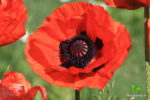MIDSUMMER
Midsummer is celebrated in our countries between June 18 and 25, each country on slightly different dates. It is the most important traditional festivity of the summer in Finland, Sweden, Estonia and Latvia. Each country has its own authentic traditions related to sun and fertility while what is common to all is special festive foods, picking wildflowers and making wreaths, and gathering to celebrate around a fire – a bonfire or maypole.
Midsummer in Finland is celebrated on a different date depending on the year, around 18th to 25th of June. Finns usually go to their summer cottages to celebrate the Midsummer which can include bonfires, summer concerts and other activities.
In Sweden, Midsummer is one of the most celebrated holidays and Midsummer Eve is always on a Friday between 19 and 25 June and it is usually celebrated in the countryside where Swedes gather with friends and family. They will pick flowers for making wreaths for the maypole which is raised in an open spot where children and adults perform traditional ring dances. A flower crown in the hair and singing songs while drinking schnapps is another traditional activity. Typical food for Midsummer is pickled herring served with new potatoes, chives, and sour cream. Legend says that if you place seven types of flowers under your pillow in midsummer, you will dream about your future beloved one.
Midsummer or St. John’s Day, Jaanipäev as it is known in Estonia, is one of the oldest local celebrations. Late June is the perfect time for a holiday in the blooming nature where days extend into nights, with barely any darkness in sight.
Summer Solstice
Due to its northern location, Estonia experiences the summertime ‘White Nights’ phenomena, when the sun sets late and the night is dusk at most. Midsummer coincides closely with the longest day of the year in the northern hemisphere – the summer solstice. Every year the solstice occurs on June 20nd or 21st, Midsummer festivities beginning on the eve of June 23rd conclude on June 24th, while Estonians barely sleep during this bright period, sitting outside by the glow of bonfires and twilight.
Originating in ancient folk traditions, St. John’s Day marks the beginning of the season for haymaking. The day was celebrated long before the arrival of Christianity in Estonia and although the celebration received a Christian name, the pagan tradition is still alive and well today. Since 1919, Midsummer celebrations have coincided with those of Victory Day, when Estonian forces defeated German troops on June 23rd in the War of Independence.
Superstitious legends
Midsummer’s Eve is intertwined with many folk beliefs. Children stay up until dawn, while young lovers wander through the forest looking for a lucky fern flower said to bloom only on this night. If you are lucky enough to spot a glowworm, you may expect great fortune. Young women looking to take a sneak peek into the future are advised to collect nine different types of flowers and place them under a pillow for the night, resulting in a predictive dream revealing a future spouse. The more adventurous boys and girls are known to take a jump over the bonfire in hopes of achieving prosperity or to swing as high as possible on the village’s wooden swing. More moderate traditions include singing, dancing and telling old folk tales.
Today, Midsummer is a national holiday giving city folks an opportunity to take a break in the countryside. People tend to spend the day with friends barbecuing in the garden or having a picnic in the wilderness. However, the tradition of village parties featuring bands playing around massive bonfires hasn’t gone anywhere, proving to be the highlight event in many rural towns and villages.
The Summer Solstice is the one celebration in Latvia that has the most traditions and is held when the sun has reached its apex in the sky, with the longest day being followed by the shortest night of the year. Nature is flourishing. Because the Solstice does not take place on the same day each year, the ancient Latvians celebrated the festival in accordance with the movement of the sun, and thus began on June 21. Today, Summer Solstice Eve in Latvia is celebrated on June 23, with the Summer Solstice Day, known as Jāņi in Latvia, is an official holiday, however, those who practice authentic traditions, follow the Sun calendar. Midsummer celebration is a strong part of rural lifestyle and there are communities and rural farms that welcome visitors with pleasure, explain the authentic traditions, encourage guests to become part of the celebration and enjoy a true midsummer experience with songs, dances and ancient rituals.






